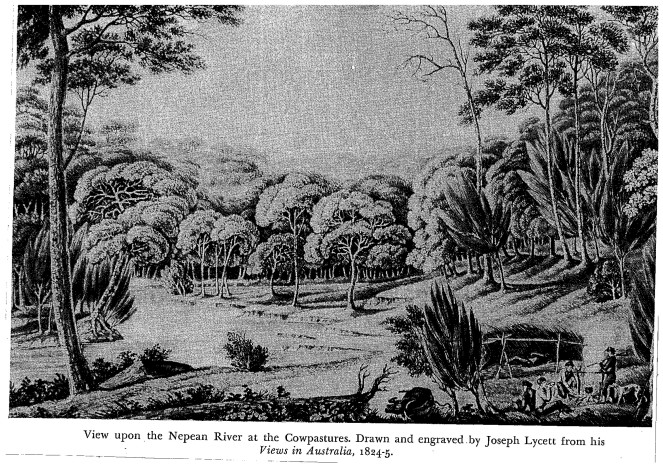Camden Red Cross sewing circles during the First and Second World Wars
The wartime efforts of Camden women have been officially recognised for the first time by the successful nomination for a New South Wales Blue Plaque with Heritage NSW. Camden Red Cross women volunteers thousands of hours of their time and skill to provide requisites for military hospitals for wounded Australian soldiers.
The announcement appeared in the Sydney press with 17 other successful nominations for a Blue Plaque across the state. They include notable people and events in their local area.

What is being recognised?
The Blue Plaque officially recognised for the first time the Camden Red Cross patriotic wartime sewing circles at the Camden School of Arts (later the Camden Town Hall, now the Camden Library) – 1914-1918, 1940-1946. This is the only recognition of this type of Red Cross wartime activity anywhere in Australia.

The story of the Camden Red Cross sewing circles
The Camden Red Cross sewing circles were one of Camden women’s most important voluntary patriotic activities during World War One and World War Two. The sewing circles started at the Camden School of Arts in 1914 and, due to lack of space, moved to the Foresters’ Hall on Argyle Street in 1918. At the outbreak of the Second World War, sewing circles reconvened in 1940 at the Camden Town Hall on John Street (the old School of Arts building – the same site as the First World War)
These sewing circles were workshops where Camden women volunteered and manufactured supplies for Australian military hospitals, field hospitals and casualty clearing stations. They were held weekly on Tuesdays, sale days in the Camden district.
Sewing circles were ‘quasi-industrial production lines’ where Camden women implemented their domestic skills to aid the war at home. Camden women cut out, assembled, and sewed together hospital supplies, including flannel shirts, bed shirts, pyjamas, slippers, underpants, feather pillows, bed linen, handkerchiefs, and kit bags. The workshops were lent several sewing machines in both wars.
The sewing circles also coordinated knitting and spinning for bed socks, stump socks, mufflers, balaclava caps, mittens, and cholera belts (body binders). The women also made ‘hussifs’ or sewing kits for the soldiers. The sewing circles attracted 80-100 women weekly during the First World War. The list of items was strikingly consistent for hospital supplies for both wars, with the only significant addition during the Second World War being the knitted pullovers and cardigans.
The production output of the Camden women was prodigious. Between 1914 and 1918, Camden Red Cross sewing circle women made over 20,300 articles tallied to over 40,000 volunteer hours. Between 1940 and 1946, during World War Two, women made over 25,000 articles, totalling over 45,000 voluntary hours.
The operation of the sewing circles was fully funded through the fundraising of Camden Red Cross and community donations. In 1917 alone, over 95% of branch fundraising was dedicated to these activities.
In World War One, other Red Cross sewing circles in the Camden district were at The Oaks, Camden Park, Theresa Park, and Middle Burragorang. During World War Two, other centres across the local area included Bringelly-Rossmore, Menangle, Narellan, and The Oaks. Each group independently funded its activities.
These patriotic voluntary activities by Camden women were part of the war at home and have received little recognition at a local, state or national level. Wartime sewing and knitting have been kept in the shadows for too long. There needs to be a public acknowledgement of the patriotic effort of these women.
The placement of the plaque

The Blue Plaque was placed on the front of the former Camden School of Arts – later called the Camden Town Hall (1939-1945),then converted to offices in 1964 and now the Camden Library.

Official recognition is long overdue
The official recognition of the wartime effort and skills of Camden women using their domestic arts and crafts in the patriotic service of Australia has taken over 75 years. This small acknowledgement of the wartime service of the Camden Red tells the story of ordinary women in extraordinary circumstances and has been long overdue.
Acknowledgement by the Member for Camden Peter Sidgreaves MP

What is a Blue Plaque?
The Heritage NSW website states:
The Blue Plaques program aims to capture public interest and fascination in people, events and places that are important to the stories of NSW.
The Blue Plaques program celebrates NSW heritage by recognising noteworthy people and events from our state’s history.
The aim of the program is to encourage people to explore their neighbourhood and other parts of NSW and connect with people of the past, historical moments and rich stories that matter to communities and have shaped our state.
The program is inspired by the famous London Blue Plaques program run by English Heritage which originally started in 1866, and similar programs around the world.
“Behind every plaque, there is a story.”
The essence of the Blue Plaques program is the storytelling. A digital story will be linked to each plaque.
The Blue Plaques should tell stories that are interesting, fun, quirky along with more sombre stories that should be not be forgotten as part of our history.
English Heritage and Blue Plaques in the United Kingdom
The New South Wales Blue Plaques were based on the English model, and the English Heritage website states:
London’s blue plaques scheme, run by English Heritage, celebrates the links between notable figures of the past and the buildings in which they lived and worked. Founded in 1866, it has inspired many similar schemes in the UK and around the world.
Camden Red Cross Blue Plaque installation

Reference
Ian Willis, Ministering Angels, The Camden District Red Cross 1914-1945. Camden Historical Society, Camden, 2014.
Updated 24 April 2023. Originally posted 18 April 2022.















![Cover[3]](https://camdenhistorynotes.files.wordpress.com/2018/04/cover3.jpg)







![Camden Museum Aust Day 2018 [2]](https://camdenhistorynotes.files.wordpress.com/2018/01/camden-museum-aust-day-2018-2.jpg)
You must be logged in to post a comment.